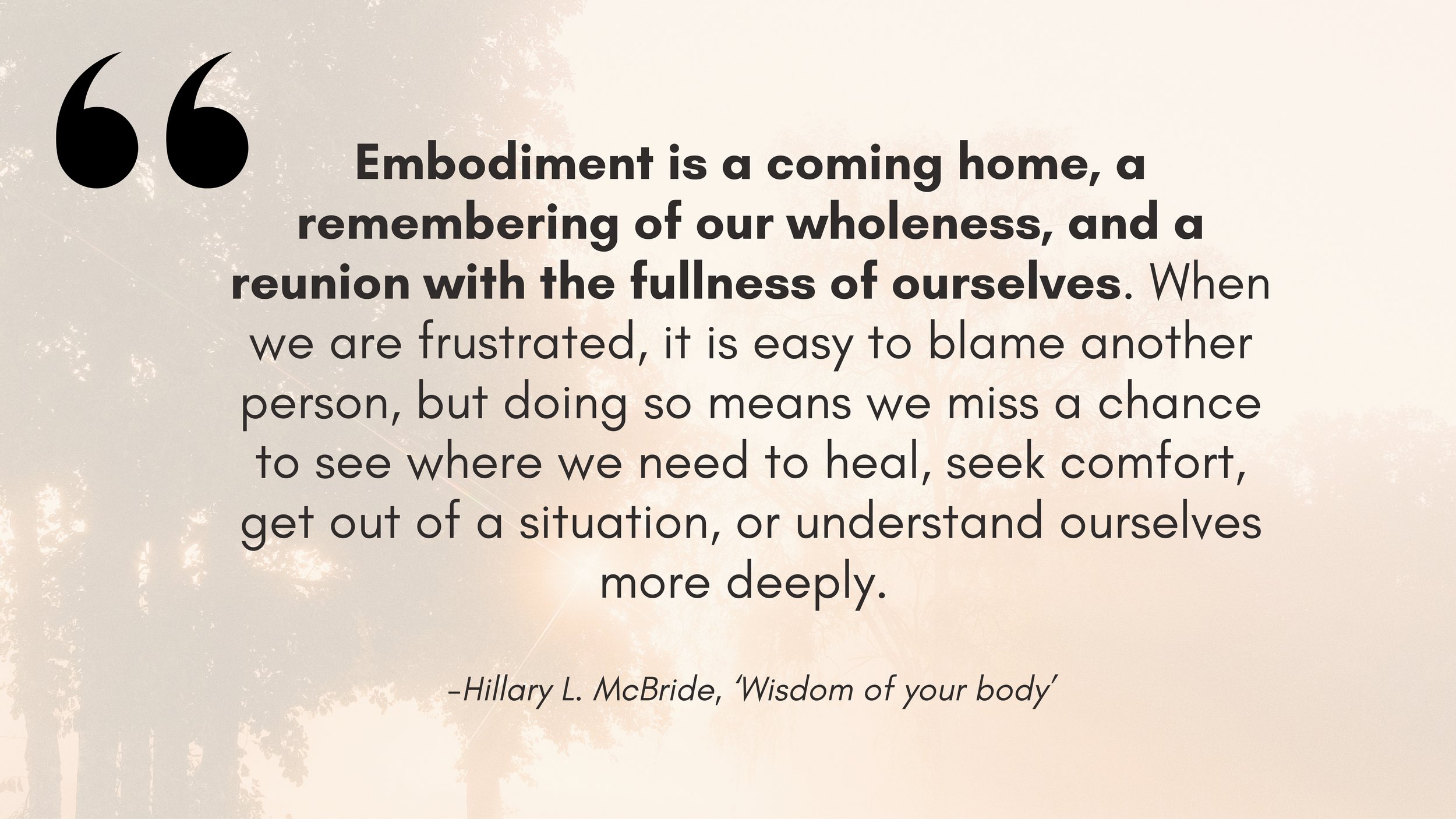Is embodiment therapy and somatic therapy the same thing?
What’s the difference between embodiment therapy and somatic therapy? How can these tools help with general anxiety and how do I use these in my online therapy practice? [18.1.25.]
You may have heard “embodiment therapy” and “somatic therapy” used interchangeably since they both focus on the mind-body connection. Here are the key differences:
Embodiment therapy
Embodiment involves developing conscious awareness of the body (bodily sensations and emotions). By learning about the mind-body connection; presence and mindfulness can grow (especially when stressed and dysregulated).
They support becoming more in tune with your felt sense, asking what your body needs (rather than powering through), and listening to your body’s rhythms. These exercises are associated with better general emotional wellness.
Embodiment practices: Yoga, dance, meditation, journaling, mindful walking, stretching, visualisation, progressive muscle tightening and relaxing, voice work, massage and breathing exercises.
Helps clients become more in tune with their bodily sensations:
Increasing self-awareness and connection to your body
Reducing stress and promoting emotional regulation
Healing disconnection caused by trauma or chronic stress
Improving confidence, presence, and authentic self-expression
Somatic therapy
Somatic therapy is also a mind-body practice although it’s more linked to healing trauma, stress and tension stored and expressed in the body. Unlike embodiment which may involve general wellness practices such as breathing exercises — somatic therapy focuses on releasing trauma in the body.
Somatic therapy is often used with clients who have post-traumatic stress disorder (PTSD) or resistant depression. Somatic therapy focuses on the body (unlike traditional talk therapy) and helps clients to mindfully regulate their nervous system when triggered. Somatic therapy aims to resolve trauma, stress, and complex emotional challenges.
Somatic practices: body scan meditation, somatic experiencing (SE), movement therapy, grounding, touch, visualisation, vocalisation, tension and trauma release exercises (TRE), and guided somatic exercises.
Helps clients understand how their bodies respond to trauma:
Improves the stress response associated with trauma
Helps process traumatic experiences
Helps develop a new relationship with past experiences
Helps develop a new relationship with past experiences
Key Difference
Both approaches value the mind and body connection but this is how they differ:
Embodiment is about enhancing presence in your body, often through wellness practices such as journalling, meditating and breathing exercises.
Somatic therapy is a clinical approach to releasing stored stress and trauma in the body. By releasing trauma, the client works to understand the mind-body connection, their nervous system and triggers.
How I use embodiment and somatic tools in therapy
Integrative therapy uses a blend of therapeutic tools. In my mental health toolkit, I often used mindful approaches like embodiment and somatic models.
Clients with anxiety can tend to over-worry as a way to try and control their overwhelming situation.
I’d use embodiment and somatic tools in these simple ways:
Embodiment and Breathwork: I’d ask them to notice and name any sensations in their body when they are feeling anxious (for example. tightness in the stomach or tightness in the jaw). Then I’d ask the client to release tension, breathing in and out deeply for the count of ten.
Somatic practice of Body Scanning: When we overthink we can get carried away with negative thoughts. Body scanning (slowly scanning the body from head to toe, noticing tight areas —imaging them softening), can shift our busy thoughts to our body sensations — slowly increasing presence.




